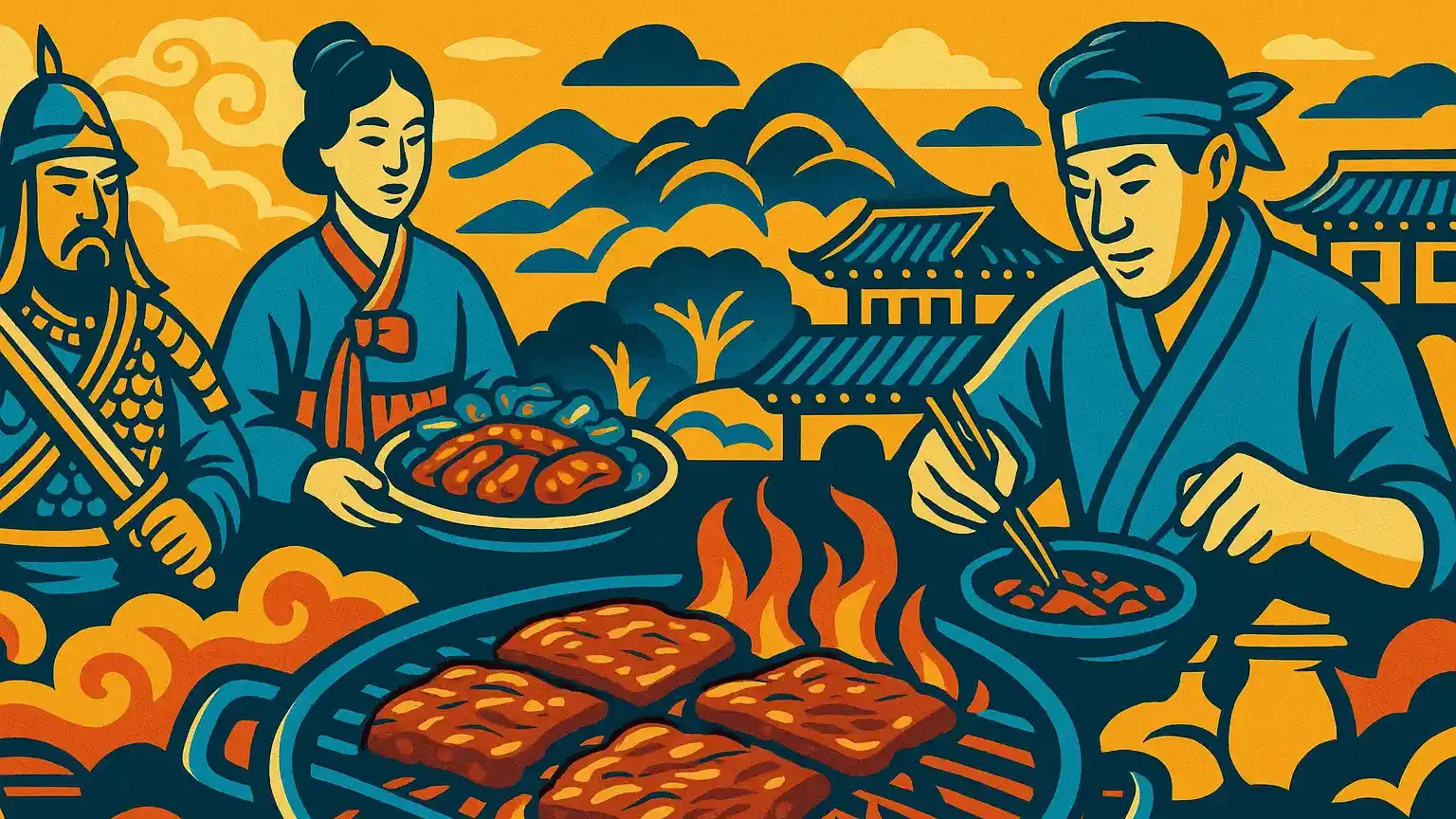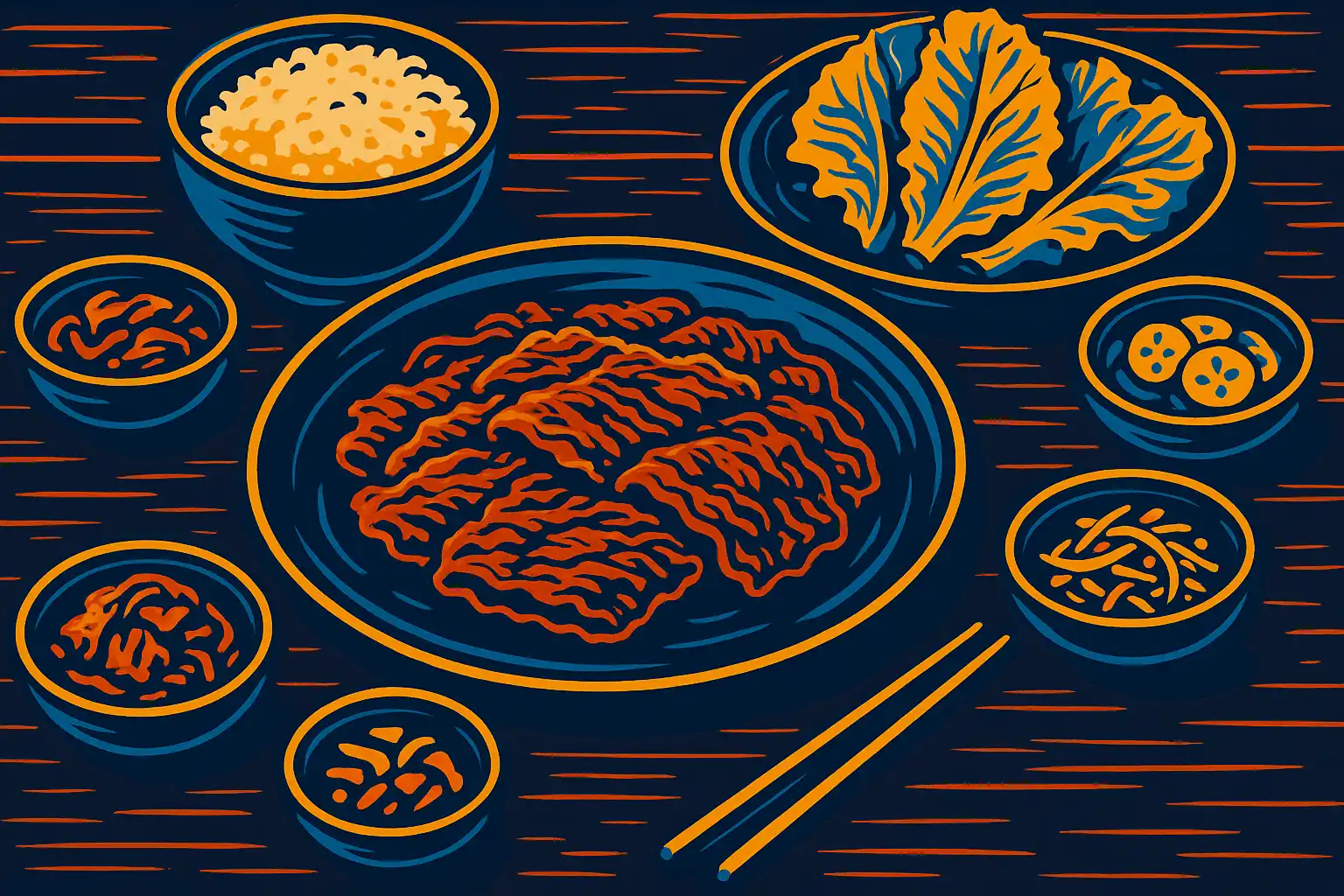The question “What Is Bulgogi” often arises among those exploring Korean cuisine. Bulgogi is one of the most recognized Korean dishes, making it an essential term to understand in a food dictionary context. This flavorful dish is not only popular in South Korea but has also gained international fame due to the rise of K-dramas, TV series, and global cultural exchange. Understanding this dish is important because it highlights how food connects culture, tradition, and identity.
In this blog, we will define bulgogi, explain its key elements, trace its history, and describe its applications in modern contexts. By exploring its definition and origin, readers gain insight into why this dish holds such a special place in Korean culture. This discussion also improves knowledge of culinary terms that are part of both casual dining and scholarly food studies.
Definition of Bulgogi

The term bulgogi comes from Korean words: “bul” (fire) and “gogi” (meat). Literally, it means “fire meat.” In a dictionary context, the definition of the food refers to marinated slices of beef or sometimes pork that are grilled or stir-fried. The marinade typically contains soy sauce, sugar, sesame oil, garlic, and other seasonings that give bulgogi its sweet and savory flavor.
It can be served with rice, lettuce wraps, or as part of larger meals. In modern adaptations, bulgogi appears in tacos, burgers, and even pizza. Synonyms or related terms include “Korean BBQ beef” or “marinated grilled meat.” However, these alternatives do not fully capture the cultural and historical meaning behind the dish.
Within the dictionary category, the dish is classified as both a food term and a cultural concept. It is more than a dish; it reflects Korean identity, tradition, and hospitality. Its definition highlights not just ingredients but also its method of preparation and its role in shared dining experiences.
How Bulgogi Is Made and Served
To fully understand what is bulgogi, it is essential to explore its preparation and cultural significance. The Korean dish usually uses high-quality cuts of beef such as ribeye or sirloin. Thin slices are marinated in a mixture of soy sauce, sugar, sesame oil, garlic, black pepper, and sometimes pear or apple puree for natural sweetness and tenderness. This marinade enhances the meat’s flavor and ensures a tender texture when cooked.
Cooking methods vary. Traditionally, the dish is grilled over open flames, which aligns with its literal meaning, “fire meat.” In many Korean homes, it is stir-fried in a pan or cooked on a tabletop grill. Serving the dish often involves side dishes, or banchan, and lettuce wraps (ssam) where the meat is paired with rice, garlic, and spicy paste (ssamjang).
It also symbolizes sharing. Meals in Korea emphasize togetherness, and it is commonly served family-style. This reinforces the concept of harmony and collective enjoyment.
In modern contexts, it has adapted to global tastes. International restaurants have included bulgogi in fusion dishes like bulgogi pizza, pasta, or tacos. These creative uses maintain the dish’s essence while reaching new audiences.
The explanation also extends to its representation in entertainment. K-dramas and variety shows frequently depict characters enjoying bulgogi, reinforcing its place in Korean culture and making it recognizable to international fans. For example, scenes featuring families gathering around grilled dish reflect warmth, love, and tradition.
Thus, it is not only defined by its ingredients and cooking process. Its broader meaning lies in its role as a cultural ambassador of Korean food.
History and Origin of Bulgogi

The origin of the food dates back centuries. Historical records suggest that bulgogi evolved from maekjeok, a skewered beef dish enjoyed during the Goguryeo Dynasty (37 BCE–668 CE). Over time, cooking methods changed, but the core idea of marinated grilled meat remained.
In the Joseon Dynasty, the Korean food became popular among aristocrats and commoners alike. Its preparation shifted from skewered grilling to pan-cooking or broiling, depending on available resources. The marinade also developed into a more refined blend of soy sauce, garlic, and sesame oil.
During the 20th century, bulgogi grew into a symbol of Korean identity. It spread internationally with Korean migration, military exchanges, and the global popularity of Korean food. Today, bulgogi is widely recognized as one of the best Korean dramas of cuisine—an iconic dish that introduces Korean culture to the world.
The historical journey of bulgogi shows its resilience and adaptability. Despite changes in preparation and presentation, its essence as marinated fire-grilled meat remains intact, bridging tradition and modernity.
Applications or Uses
The applications of bulgogi extend far beyond traditional dining. In Korea, it is served during special occasions such as family gatherings, holidays, and celebrations. Bulgogi symbolizes hospitality and respect, making it an ideal dish for entertaining guests.
In the restaurant industry, it is a cornerstone of Korean barbecue dining. Its versatility allows chefs to prepare it on tabletop grills, which enhances the interactive dining experience. Tourists often seek the Korean Dish as part of their culinary exploration, linking food tourism with cultural immersion.
Globally, it has become a versatile ingredient in fusion cuisine. Restaurants around the world use the famous dish as a topping for pizza, filling for tacos, or main protein in sandwiches and burgers. These adaptations highlight its universal appeal and adaptability.
It also serves as a teaching point in cultural studies and gastronomy. Culinary schools and food scholars use the dish to explain Korean cooking techniques, food symbolism, and cultural context. This educational application strengthens its presence in the global food glossary.
Moreover, the dish popularity contributes to the growth of Korean food exports. Packaged Korean meat marinades and ready-to-cook kits are available internationally, making it easier for people to prepare at home. As a result, the dish functions not only as a dish but also as a cultural export.
Conclusion
Bulgogi is more than just a delicious grilled meat dish—it is a cultural symbol that embodies Korea’s history, tradition, and spirit of togetherness. From its ancient origins in the Goguryeo Dynasty to its modern presence in international dining and fusion cuisine, bulgogi has proven its ability to adapt while preserving its authentic flavors. Its sweet and savory marinade, communal style of eating, and role in family gatherings highlight the values of harmony and hospitality at the heart of Korean culture. Today, whether enjoyed in a traditional Korean barbecue restaurant or as part of a global food innovation, bulgogi continues to connect people through taste and tradition. It stands as both a beloved national dish and a cultural ambassador, inviting the world to experience the richness of Korean cuisine.
Resources
- SunsetAbroad – Most Popular Foods In South Korea: Famous Food Of Seoul
- Maangchi – Bulgogi Recipe
- The Korea Herald – Bulgogi and Its Global Popularity
- Kisti – Bulgogi History
- BBC Travel – Is this the most authentic Korean barbecue?

